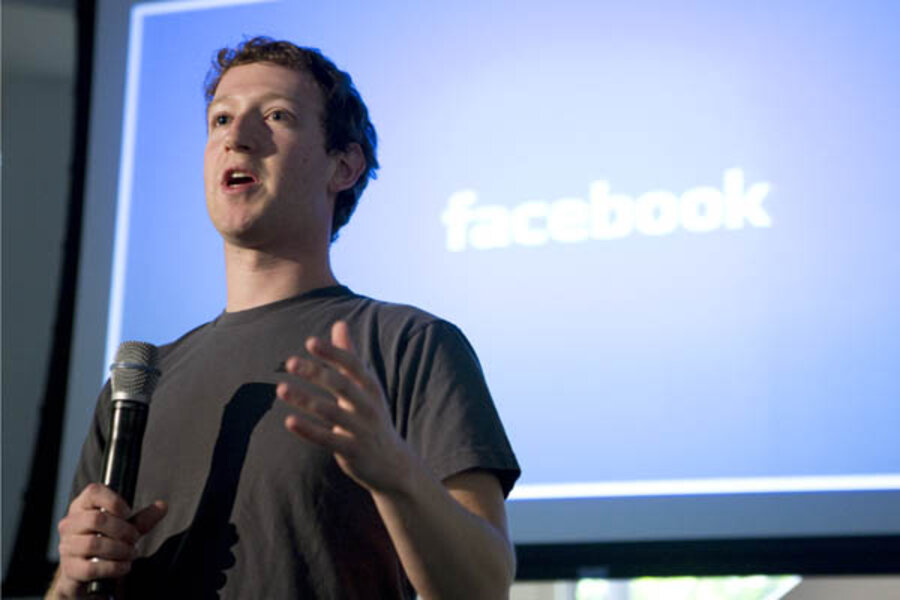A look inside Facebook's massive data center
Loading...
Just weeks before switching on a massive, super-efficient data center in rural Oregon, Facebook is giving away the designs and specifications to the whole thing online. In doing so, the company is breaking a long-established unwritten rule for Web companies: don't share the secrets of your server-stuffed data warehouses.
Ironically, most of those secret servers rely heavily on open source or free software, for example the Linux operating system and the Apache webserver. Facebook's move—dubbed the Open Compute Project—aims to kick-start a similar trend with hardware.
"Mark [Zuckerberg] was able to start Facebook in his dorm room because PHP and Apache and other free and open-source software existed," says David Recordon, who helps coordinate Facebook's use of, and contribution to, open-source software. "We wanted to encourage that for hardware, and release enough information about our data center and servers that someone else could go and actually build them."
RELATED: Facebook Wants to Supply Your Internet Driver's License
The attitude of other large technology firms couldn't be more different, says Ricardo Bianchini, who researches energy-efficient computing infrastructure at Rutgers University. "Typically, companies like Google or Microsoft won't tell you anything about their designs," he says. A more open approach could help the Web as a whole become more efficient, he says. "Opening up the building like this will help researchers a lot, and also other industry players," he says. "It's opening up new opportunities to share and collaborate."
The open hardware designs are for a new data center in Prineville, Oregon, that will be switched on later this month. The 147,000-square-foot building will increase Facebook's overall computing capacity by around half; the social network already processes some 100 million new photos every day, and its user base of over 500 million is growing fast.
The material being made available - on a new website - includes detailed specifications of the building's electrical and cooling systems, as well as the custom designs of the servers inside. Facebook is dubbing the approach "open" rather than open-source because its designs won't be subject to a true open-source legal license, which requires anyone modifying them to share any changes they make.
The plans reveal the fruits of Facebook's efforts to create one of the most energy-efficient data centers ever built. Unlike almost every other data center, Facebook's new building doesn't use chillers to cool the air flowing past the servers. Instead, air from the outside flows over foam pads moistened by water sprays to cool by evaporation. The building is carefully oriented so that prevailing winds direct outside air into the building in both winter and summer.
Facebook's engineers also created a novel electrical design that cuts the number of times that the electricity from the grid is run through a transformer to reduce its voltage en route to the servers inside. Most data centers use transformers to reduce the 480 volts from the nearest substation down to 208 volts, but Facebook's design skips that step. "We run 480 volts right up to the server," says Jay Park, Facebook's director of data-center engineering. "That eliminates the need for a transformer that wastes energy."
To make this possible, Park and colleagues created a new type of server power supply that takes 277 volts and which can be split off from the 408-volt supply without the need for a transformer. The 408 volts is delivered using a method known as "three phase power": three wires carry three alternating currents with carefully different timings. Splitting off one of those wires extracts a 277-volt supply.
Park and colleagues also came up with a new design for the backup batteries that keep servers running during power outages before backup generators kick in—a period of about 90 seconds. Instead of building one huge battery store in a dedicated room, many cabinet-sized battery packs are spread among the servers. This is more efficient because the batteries share electrical connections with the computers around them, eliminating the dedicated connections and transformers needed for one large store. Park calculates that his new electrical design wastes about 7 percent of the power fed into it, compared to around 23 percent for a more conventional design.
According to the standard measure of data-center efficiency—the power usage efficiency (PUE) score—Facebook's tweaks have created one of the most efficient data centers ever. A PUE is calculated by dividing a building's total power use by the energy used by its computers - a perfect data center would score 1. "Our tests show that Prineville has a PUE of 1.07," says Park. Google, which invests heavily in data-center efficiency, reported an average PUE of 1.13 across all its locations for the last quarter of 2010 (when winter temperatures make data centers most efficient), with the most efficient scoring 1.1.
Google and others will now be able to cherry pick elements from Facebook's designs, but that poses no threat to Facebook's real business, says Frank Frankovsky, the company's director of hardware design. "Facebook is successful because of the great social product, not [because] we can build low-cost infrastructure," he says. "There's no reason we shouldn't help others out with this."
SOURCE: Technology Review
RELATED: Facebook Wants to Supply Your Internet Driver's License





